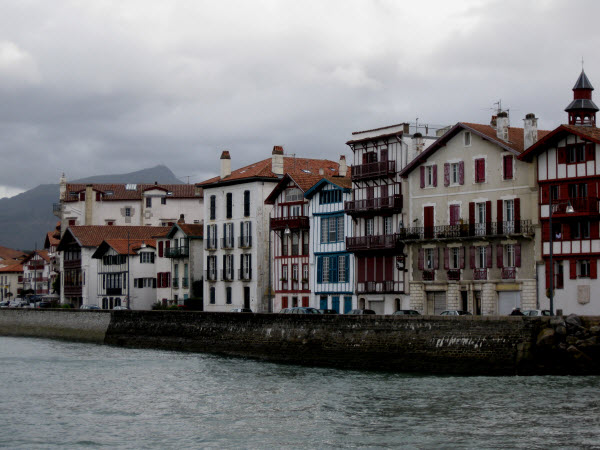Nicola Heath writes: We arrived in St Jean de Luz at the same time as a blustery squall. It was the afternoon and all we could do was find a place to stay and literally batten down the hatches. The following morning the storm persisted and the furthest we ventured was to one of the cafes that line the Place Louis XIV. The town was deserted, and leaves and branches whipped across the square.

St Jean de Luz is a port town in the Pays Basque in the far south of France. The town sits at the mouth of the river Nivelle, and has a long seafaring history. According to Mark Kurlansky’s superlative The Basque History of the World (which I read on a previous trip to the Basque region in Spain) the Basques became the first commercial whalers in the 7th and 8th centuries. By the 14th century they had ventured far beyond the Bay of Biscay hunting whales and schools of cod, which salted fuelled Basque voyages to fishing grounds as distant as Iceland, Norway and eventually Newfoundland in North America. Faces to the gale as we struggled past the harbour, I could readily imagine what a dangerous enterprise whaling would have been for the medieval Basque adventurers.
Later in the day when the wind and rain abated, we emerged out of doors with a handful of other tourists and wandered down the Rue Gambetta, a pedestrian avenue lined with shops, and home to the Église St Jean Baptiste, where Louis XIV married his Spanish bride, Marie Therese, in 1660. We indulged our tourist tendencies and each bought a pair of espadrilles, rope-soled shoes native to the Basque region. I was careful to check the shoes were made in France, as the traditional espadrille industry has been overtaken since the 1980s by cheap, factory made versions imported from China.
I had spent the stormy morning reading Athenaïs, about Louis XIV’s formidable mistress, and I persuaded Paul to come along to a guided tour of the Maison Louis XIV, the house where the young Sun King spent his first night with the Infanta, a story recounted in the book. The tour was, unsurprisingly, in French and although we were provided with printed information in English, it wasn’t the most edifying hour I’ve spent. The 17th century house was lived in until relatively recently, and colour family photographs around the place were oddly out of place amongst the period furniture and faded furnishings.
One of the highlights of any trip to Basque country is the food. My life began to simplify into time between opportunities to stuff another delight into my mouth. We hit upon a winner at a patisserie in St Jean de Luz, millefeuille, which we ate over and over again throughout our time in France. At the market in town we literally feasted our eyes on the vast array of fresh produce — cheeses, hams, seafood, fresh bread, fruit and vegetables. Accustomed to seeing the standard chicken, lamb, pork and beef in the shops in England and Australia, we marvelled at the range of meat available — such as whole rabbit, pigeon, and quail.
One night we had dinner at the restaurant Tourasse on the street of the same name, and, unable to make sense of the menu, we ordered randomly, and were rewarded with a winning selection of seafood, including txangurro, a delicious traditional Basque dish of crab and tomato.
The town centre of St Jean de Luz is remarkably picturesque. Three and four storey Basque-style houses, with wooden shutters and rust red trim, line the narrow streets, many hundreds of years old. Once the storm front passed we were able to enjoy a couple of days of sunny autumn weather in the seaside town, before we moved on further up the coast, looking for surf.
Nicola Heath lives in London, works in media and travels Europe at every opportunity (but she’s just snuck back to Australia to dodge the English winter). You can find her blog here.







Crikey is committed to hosting lively discussions. Help us keep the conversation useful, interesting and welcoming. We aim to publish comments quickly in the interest of promoting robust conversation, but we’re a small team and we deploy filters to protect against legal risk. Occasionally your comment may be held up while we review, but we’re working as fast as we can to keep the conversation rolling.
The Crikey comment section is members-only content. Please subscribe to leave a comment.
The Crikey comment section is members-only content. Please login to leave a comment.